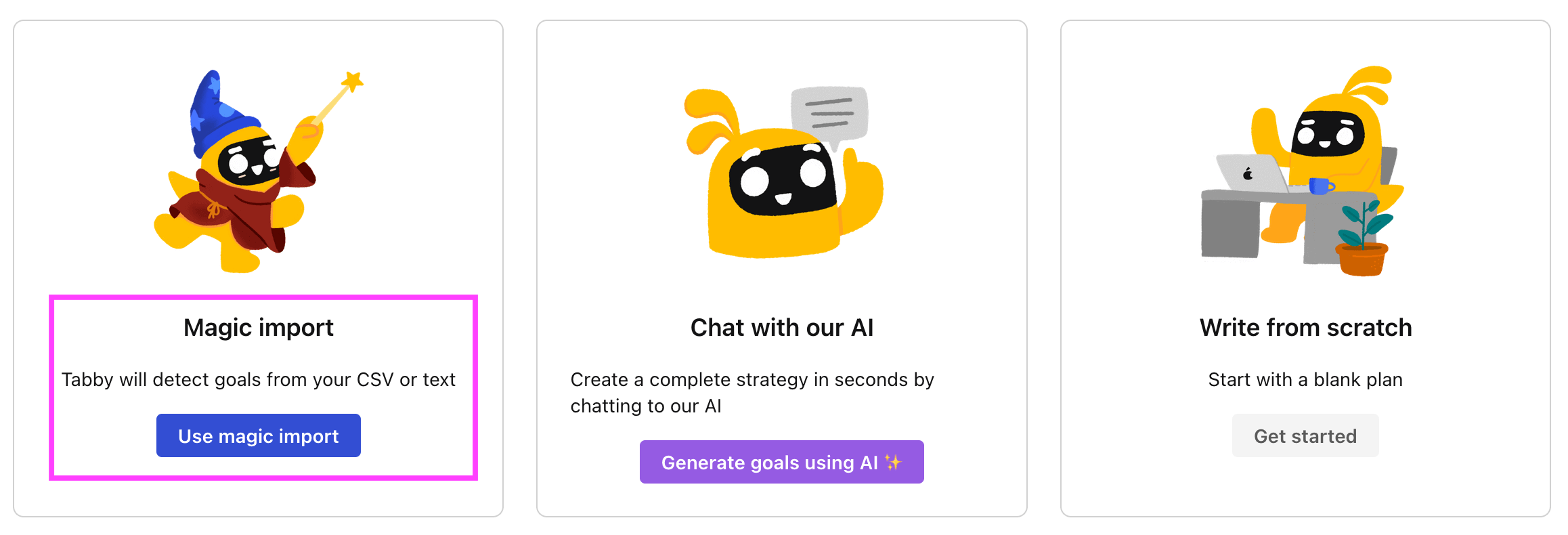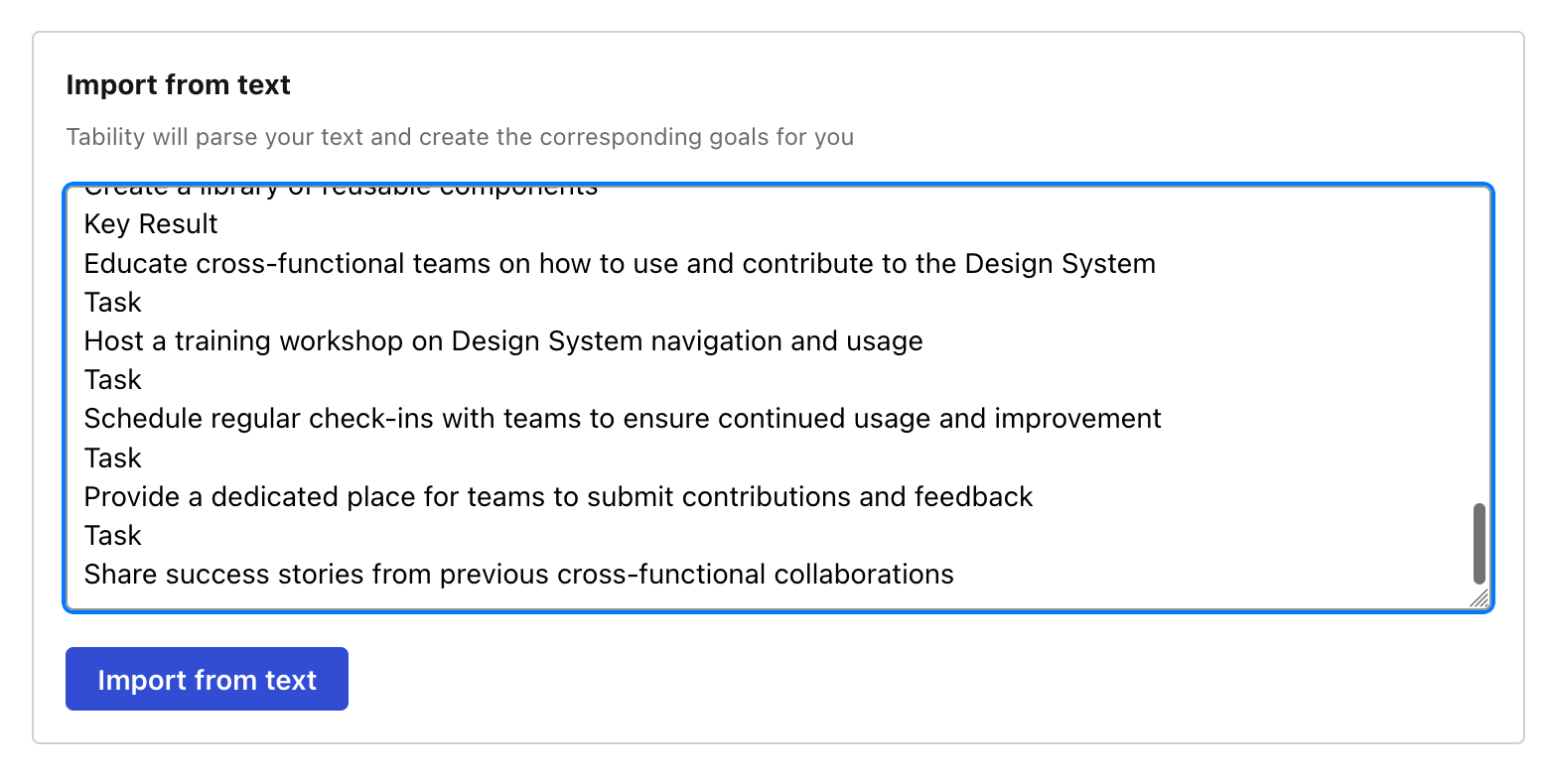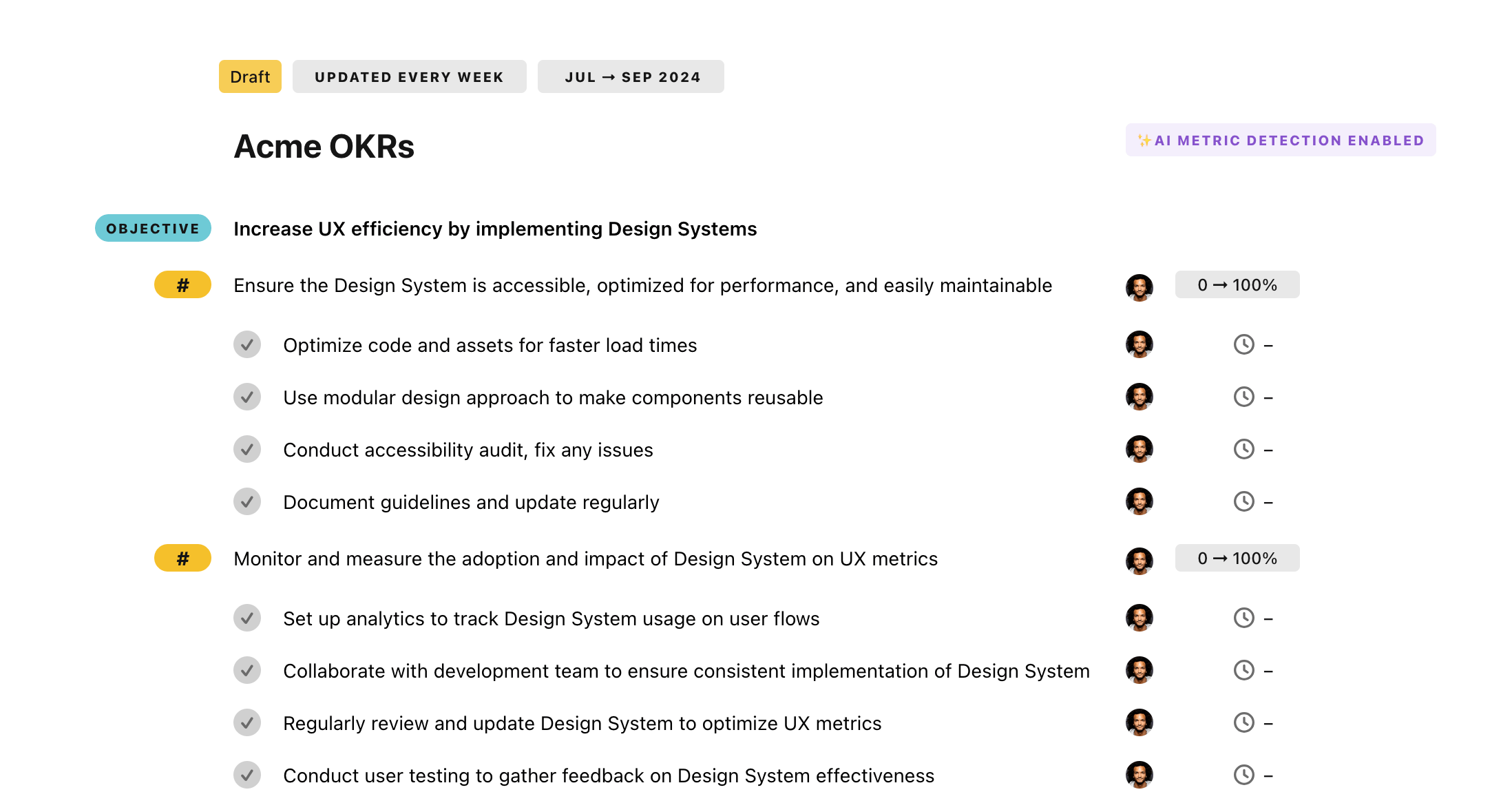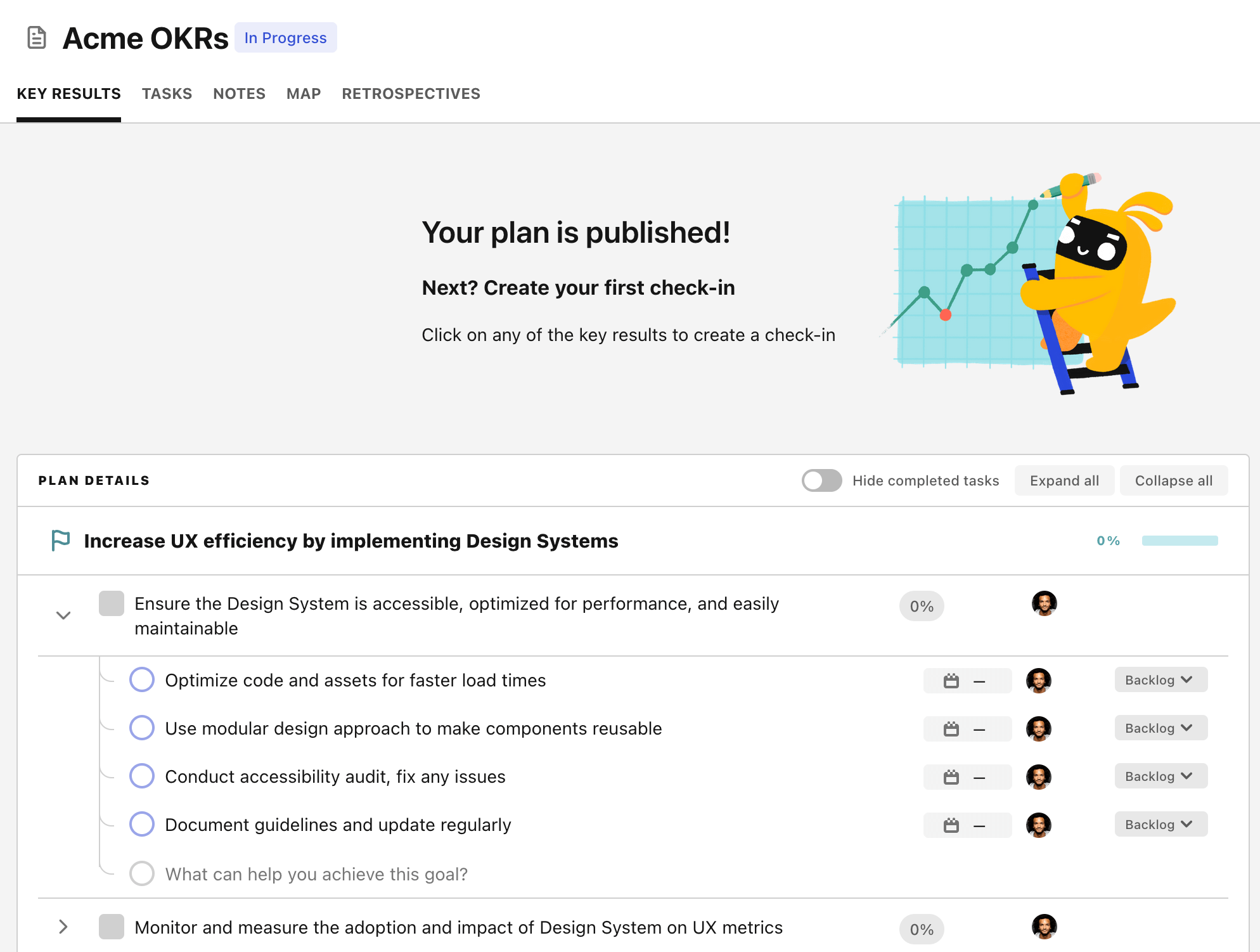OKR template to increase efficiency and effectiveness of product development through continuous process improvement
Your OKR template
The main agenda of this OKR is to cut down on resource wastage. This can be achieved primarily by identifying and prioritizing areas where this wastage occurs most. A diligent monitoring and tracking system should be set in place for a continual reduction in wastage. The implementation of streamlined processes would also improve efficiency in resource allocation and utilization.
This OKR also aims at increasing the success rate of product launches by 15% through improved collaboration and workflows. This can be done by promoting cross-functional collaboration within teams, analyzing existing workflows to rectify inefficiencies, bringing in a project management tool for better communication, and establishing a feedback system with stakeholders.
The ultimate goal is to trim down the product development cycle time by 20% through automation and process streamlining. The OKR lacks specific initiatives for this outcome, suggesting that it would be achieved as a result of the other improvements in efficiency, waste reduction, and successful launches.
ObjectiveIncrease efficiency and effectiveness of product development through continuous process improvement
KRAchieve a customer satisfaction rating of 90% by addressing product development pain points and enhancing quality
KRDecrease resource wastage by 10% through optimized resource allocation and utilization
Identify and prioritize areas where resource wastage is currently occurring
Monitor and track resource usage regularly to ensure ongoing reduction in wastage
Implement streamlined processes and systems to improve resource allocation and utilization efficiency
Conduct a thorough assessment of current resource allocation and utilization practices
KRIncrease the percentage of successful product launches by 15% through improved workflows and collaboration
Foster cross-functional collaboration through regular team meetings and knowledge sharing sessions
Conduct a thorough analysis of existing workflows to identify bottlenecks and inefficiencies
Implement a project management tool to streamline communication and task tracking
Establish a feedback loop with stakeholders to continuously improve product launch processes
KRReduce product development cycle time by 20% through streamlined processes and automation
How to edit and track OKRs with Tability
You'll probably want to edit the examples in this post, and Tability is the perfect tool for it.
Tability is an AI-powered platform that helps teams set better goals, monitor execution, and get help to achieve their objectives faster.
With Tability you can:
- Use AI to draft a complete set of OKRs in seconds
- Connect your OKRs and team goals to your project
- Automate reporting with integrations and built-in dashboard
Instead of having to copy the content of the OKR examples in a doc or spreadsheet, you can use Tability’s magic importer to start using any of the examples in this page.
The import process can be done in seconds, allowing you to edit OKRs directly in a platform that knows how to manage and track goals.
Step 1. Sign up for a free Tability account
Go tohttps://tability.app/signup and create your account (it's free!)
Step 2. Create a plan
Follow the steps after your onboarding to create your first plan, you should get to a page that looks like the picture below.

Step 3. Use the magic importer
Click on Use magic import to open up the Magic Import modal.
Now, go back to the OKR examples, and click on Copy on the example that you’d like to use.

Paste the content in the text import section. Don’t worry about the formatting, Tability’s AI will be able to parse it!

Now, just click on Import from text and let the magic happen.

Once your example is in the plan editor, you will be able to:
- Edit the objectives, key results, and tasks
- Click on the target 0 → 100% to set better target
- Use the tips and the AI to refine your goals
Step 4. Publish your plan
Once you’re done editing, you can publish your plan to switch to the goal-tracking mode.

From there you will have access to all the features that will help you and your team save hours with OKR reporting.
- 10+ built-in dashboards to visualise progress on your goals
- Weekly reminders, data connectors, and smart notifications
- 9 views to map OKRs to strategic projects
- Strategy map to align teams at scale